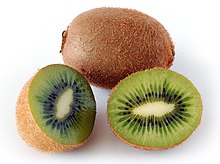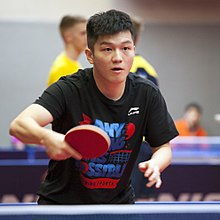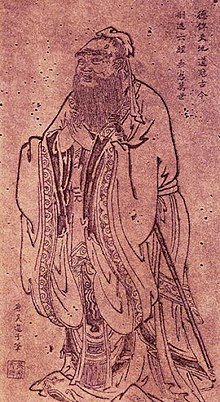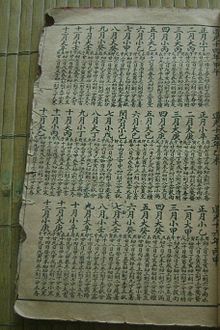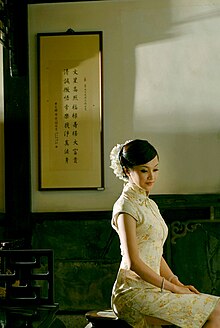National symbols of China
This article has multiple issues. Please help improve it or discuss these issues on the talk page. (Learn how and when to remove these messages)
|
This is the current list of the national symbols of China. The People's Republic of China (PRC) controls all of mainland China, while the Republic of China (ROC) controls Taiwan and nearby islands. See National symbols of Taiwan. Both countries used to claim to be the legitimate government of all of China, with Taiwan informally dropping territorial claims in the early nineties.
The national emblem means "national crest / shield emblem and logo design", which represents the image and dignity of the country's political power and people. It is one of the symbols of a country's political power. The definition of China's national emblem is explained in Article 3 of the national emblem law of the people's Republic of China: "the national emblem of the people's Republic of China is the symbol and symbol of the people's Republic of China." the national emblem and the national flag are the symbols of the same country. In essence, they are the identification symbol design of a state power and the symbolic symbol of a state power. However, in the long historical evolution and practical application, the design of signal flag with stronger visual recognition characteristics has gradually evolved into the design of national flag, while the worship and beautification of totem has evolved into the theory of Heraldry and the design of national emblem.[1]
The national emblem appearing in modern times is often designed directly based on European heraldry. But in fact, the development of national emblem design in human society also has a long process. As a symbol of a country, even without the artistic concept of European heraldry, human beings will explore totem worship with similar concept in social practice. For example, there was no legal national emblem in the Qing Dynasty, but the "dragon" totem in the "Yellow Dragon flag" was widely used as a substantive national emblem in the official designs of the government such as silver coins and passports.[2]
In the early days of the people's Republic of China, there was also the design of the national seal with the nature of the national emblem. In ancient China, the national seal was the certificate of the emperors of the orthodox dynasties in previous dynasties. Its symbolic power and stamping effect were similar to that of the modern national emblem. When the people's Republic of China was just established, it also took the traditional seal designed based on the traditional seal as an official duty (for example, the national seal "seal of the Central People's Government of the people's Republic of China" in the National Museum of China), but later it was officially changed to the European round seal design.[3]
Symbols of the People’s Republic of China
| Symbol | Image | Description |
|---|---|---|
| National flag | National flag of the PRC (Wu Xing Hong Qi) |
The national flag of the People's Republic of China was designed by Zeng Liansong. It has a red field charged with five golden stars in the canton. The color red represents the Chinese Communist Revolution, the four smaller stars represent the four social classes in Chinese society, and the largest star represents Chinese unity under the leadership of the Chinese Communist Party (CCP). One corner of each of the four smaller stars points towards the center of the bigger star, representing the principle that unity should go around the center. This flag is flown in the mainland, Hong Kong, and Macau. |
| National emblem | National Emblem (PRC) |
The National Emblem of China includes the Tiananmen Gate, where Mao declared the foundation of the People's Republic of China, in a red circle. Above the Gate are five stars; the largest represents the CCP, while the four smaller stars represent the four social classes. The emblem's outer border contains sheaves of wheat and rice, representing Chinese agricultural workers. At the bottom center is a cog-wheel, representing Chinese industrial workers. The red ribbon represents the unification of the Chinese people. |
| National anthem | "March of the Volunteers" |
The national anthem of China is the "March of the Volunteers". Its lyrics were composed by poet and playwright Tian Han and its music was composed by Nie Er. |
| Founder of the nation | Mao Zedong |
Mao Zedong (1893–1976) established the PRC on October 1, 1949, which remains a national holiday. His portrait is displayed on the entrance of Tiananmen Square. |
| Qin Shi-huang | Qin Shi-huang (literally, "First Emperor of Qin") (259 BC - 210 BC) was the founder of the Qin dynasty and then, after the Qin conquered the other Warring States and unified all of China, the first emperor of a unified China.[4] He is widely considered to be the founder of China as a country. | |
| National currency | Renminbi |
The renminbi is the official currency of the People's Republic of China. The yuan is its basic unit. The ISO code for renminbi is CHY. |
| National animal | Giant panda |
The national animal of China is the giant panda (Ailuropoda melanolueca), a bear native to south-central China. |
| Chinese dragon |
The Chinese dragon is a legendary creature appearing in Chinese mythology and folklore. The dragon has many animal-like forms, including those resembling turtles and fish, but is usually depicted as a snake with four legs. | |
| National bird | Red-crowned crane |
The red-crowned crane or Manchurian crane (Grus japonensis) is a large East Asian crane and among the rarest cranes in the world. It is found in Siberia (eastern Russia), northeastern China, and the Mongol Daguur Strictly Protected Area in northeastern Mongolia. |
| Golden pheasant (unofficial) |
The golden pheasant (Chrysolophus pictus) is a game bird of the family Phasianidae. Although it is native to western China, feral populations have been established in the United Kingdom, Canada, the United States, Mexico, Colombia, Peru, Bolivia, Chile, Argentina, Uruguay, the Falkland Islands, Germany, Belgium, the Netherlands, France, Ireland, Australia and New Zealand. | |
| National fruit | Fuzzy kiwifruit |
The fuzzy kiwifruit (Actinidia deliciosa) is the national fruit of China. It has fuzzy, dull brown skin and tangy, bright green flesh. |
| Jujube |
The jujube (Ziziphus zizyphus) is the second national fruit of China. It is an oval drupe 1.5-3 centimeters deep; it resembles a date and has a single hard stone like an olive. | |
| National tree | Ginkgo |
Ginkgo (Ginkgo biloba) is the only living species in the division Ginkgophyta, all others being extinct. |
| National Flower | Plum blossom |
The flower, long a beloved subject in the traditional painting and poetry of East Asia and Vietnam. |
| National Instrument | Guqin |
The guqin 古琴 is a plucked seven-string Chinese musical instrument. It has been played since ancient times, and has traditionally been favoured by scholars and literati as an instrument of great subtlety and refinement. |
| National sport | Table tennis |
Table tennis has been declared by Chairman Mao as a Chinese national sport. |
| National dish | Peking duck |
China's globally recognized national dish is the Peking duck. |
| National Poet | Li Bai |
Li Bai, also known as Li Bo, courtesy name Taibai, art name Qinglian Jushi, was a Chinese poet, acclaimed from his own time to the present as a brilliant and romantic figure who took traditional poetic forms to new heights. |
| National Philosopher | Confucius |
Confucius was a Chinese philosopher and politician of the Spring and Autumn period who is traditionally considered the paragon of Chinese sages. Confucius's teachings and philosophy underpin East Asian culture and society, remaining influential across China and East Asia to this day. |
| National Calendar | Chinese calendar |
The traditional Chinese calendar was developed between 771 and 476 BCE, during the Spring and Autumn period of the Eastern Zhou dynasty. |
| National Clothing | Cheongsam |
Cheongsam and sometimes referred as the mandarin gown, is a Chinese dress worn by women which takes inspiration from the qizhuang, the ethnic clothing of the Manchu people. |
| Hanfu |
Hanfu is the traditional styles of clothing worn by the Han Chinese. | |
| National Drink | Baijiu |
Baijiu is a Chinese colourless liquor typically coming in between 35% and 60% alcohol by volume (ABV). |
See also
References
- ^ 肖聰榕(Xiao Congrong).探析国徽设计的历史流变(Analyze the historical changes of national emblem design[J].工业设计,2021(03):76-77.
- ^ 肖聰榕(Xiao Congrong).探析国徽设计的历史流变(Analyze the historical changes of national emblem design[J].工业设计,2021(03):76-77.
- ^ 肖聰榕(Xiao Congrong).探析国徽设计的历史流变(Analyze the historical changes of national emblem design[J].工业设计,2021(03):76-77.
- ^ Duiker, William J. & al. World History: Volume I: To 1800, 5th ed., p. 78. Thomson Higher Education Publishing, 2006. ISBN 0-495-05053-9.







